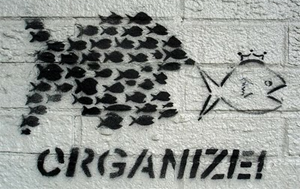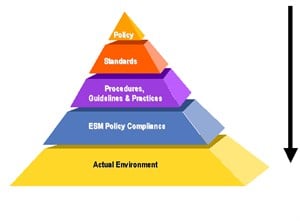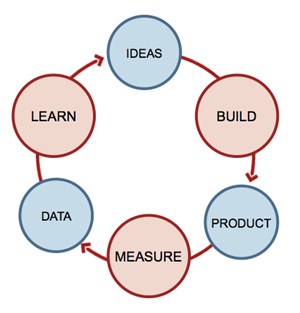 Sales is a Bottom Up Operation, Not Top Down
Sales is a Bottom Up Operation, Not Top Down
We are often fooled by the sales structure pyramid. But who could blame us. It has been this way for the last 100 years, if not since the beginning of the profession. Organizations have always felt that sales teams should be organized through top down management and structure.
Yet, with the shift in technology today, a feedback loop from the teams in the field (or 'on the ground floor') gathering information and sharing, bottom up has become a more accurate way to promote efficiency.
The Old Model
"The top down approach to user acquisition and business models is the older, more recognized approach - at least in the B2B world," writes Ben Yoskovitz, VP of product at GoInstant, when discussing the two models on his blog.

In this model, upper management gives instructions and passes on information down through the chain to be implemented. This is a structure that many large organizations built on with much less availability of quick and efficient information tools. In the beginning of software use in organizational processes, this was the structure implemented.

The New Model
Today, we are given the tools to account for customer feedback, and company wide feedback, in real-time. Meaning, no longer are field sales teams not able to relay information until after the fact. No longer are the customer facing employees separated from up-to-date communication and vice versa.
Steve Blank of Stanford has created a widely recognized system for building businesses through bottom up communication.
Renowned Stanford entrepreneurship professor, Steve Blank, has perhaps inspired much of the shift, as he advocates trial and error measurement through feedback when building a start-up. He calls it a 'build-measure-learn' feedback loop. Although, it is not just an affective system of measurement and iteration for start-ups, it works in large companies as well. The more information everyone has, the more calculated decisions can become. Whether strategized by top team members or bottom, the organization becomes one large team with access to more information.
There is important feedback from the bottom (and most robust) piece of the organization in many different industries, from manufacturing, to retail and merchandising; sales is not the only piece of the organization that can use process information feedback for efficiency. Steve Blank writes about it for startups, we write about it for sales; but together, we are only a small part of the worldwide revolution towards open feedback from all moving parts. In a consumer world, we as consumers are the bottom part of an organization. In a b2b industry, the people on the ground floor have become the most important part in bottom up feedback and decision making.
We believe that an efficient sales team, arises through communication and feedback from all the departments. In order to make effective decisions, you must be optimized for decision-making, meaning you have all the information present to make the best possible decision. In top down sales management, it is very difficult to make a decision based on information as the top does not have the same information as the bottom. But, if you empower the bottom to gather information on the fly, while allowing for strategic decision making based on this information, you can create a stronger feedback loop. A feedback loop that not only fosters strategy through information upon interaction with customers, but with other employees within the organization.
"Bottom-up planning is considered good for morale because it fosters employees to participation in corporate planning,"* according to All Business. It encourages sales teams to plan together as well as to interact with all the levels in an organization. After all, In the digital age, information and interaction is power.
Source: http://www.allbusiness.com/glossaries/bottom-up-planning/4965929-1.html#ixzz1w58yEoeL
For more on the 'Bottom Up' revolution: CNN Why Bottom Up is on its Way Up
*For Bottom-up planning definition: All Business


 Sales is a Bottom Up Operation, Not Top Down
Sales is a Bottom Up Operation, Not Top Down

.png?width=480&height=252&name=PRESS%20RELEASE-2%20(4).png)

